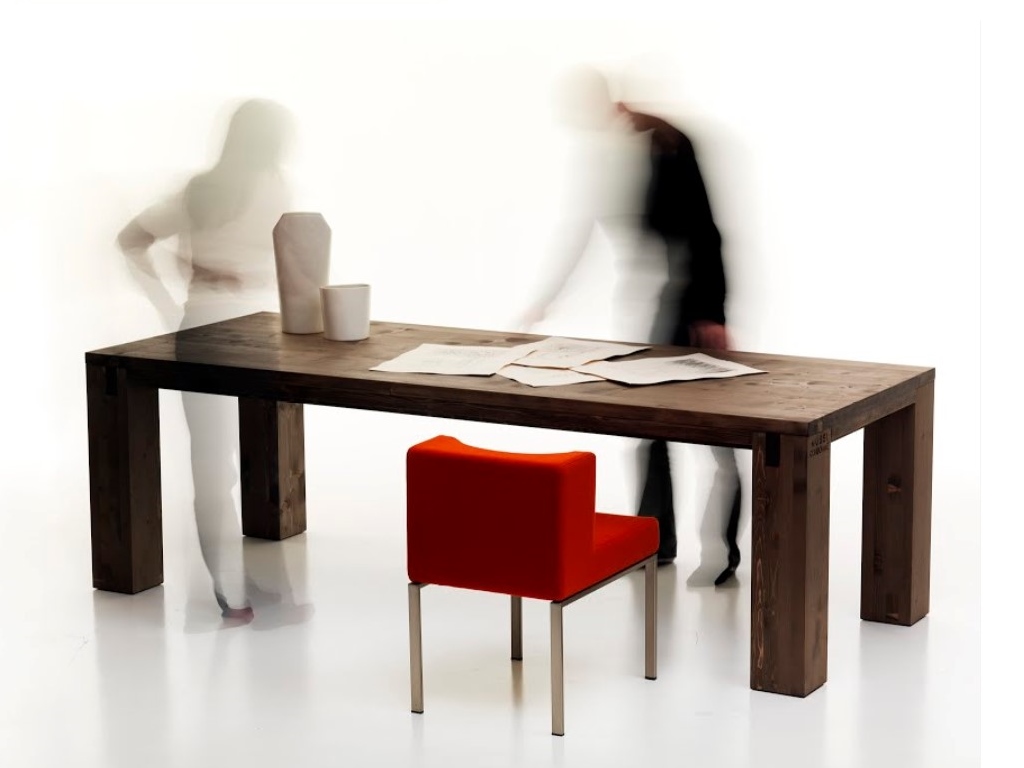
 Unioncamere
Unioncamere
Italian handcrafts: The Furniture of the Brianza District
- WTI Magazine #177 Jul 20, 2024
-

 Unioncamere
Unioncamere
The development of furniture in Lissone has roots that go back a long way: at the beginning of the twentieth century, the industries relating to wood, plywood, veneer, mirrors and accessories made with metal, marble, fabric or paint all flourished, while the carpenters of Brianza travelled around Africa and South America looking for high-quality logs.
The need to furnish the Villa Reale in Monza played a fundamental role for the craftsman of Lissone, as it brought together carpenters, glaziers, decorators, upholsterers, marble workers and engineers.
A period of technical progress began in the 1920s, accompanied by an interesting movement of ideas and projects in the field of figurative arts, and around the middle of the century the craft began to advance in accordance with the mass market for furniture.
Up until the end of the 1960s, the district underwent a period of development, with an exceptional phase during the post-war period, between 1945 and 1960, linked to the rapid growth in household income in Italy and the phenomenon of urbanization, which kick-started the demand for “house system” goods.
The region gave rise to an integrated “area system” with many types of furnishing, where inter- and infra-industrial relations were the norm. A network of tiny interconnected businesses that depended on and complemented one another was formed.
From the 1970s onwards, the number of businesses began to dwindle, as did the employment rate. A process of transformation then began, the first phase of which resulted in the spreading of subcontracting and the repositioning of the product system to a “custom-made” model, which then transformed into a “by design” system, with products being increasingly customized to meet the needs of the individual client.
In the 1990's, a phase began that has not yet ended in which the district had to deal with profound changes in the technological system, the demand, the foreign competition and the distribution system. The Great Milanese Design of the modern movement has become a reality in the shops of Lissone, which made their ingenuity available to designers to transform plans into objects.
The District
The District of Lissone is a partnership between the municipality of Lissone, Confcommercio and the Chamber of Commerce of Monza and Brianza, recognized and funded by the Region of Lombardy in 2011. It also works closely with the local branch of Confartigianato.
The traders and artisans of Lissone have united to form a partnership that identifies, selects and finances projects concerning communication, animation and urban renewal, in collaboration with the municipal administration. It also launches coordinated activities for individual trade professionals. The businesses in Lissone produce finished products as well as components. The district manages multiple production processes in their entirety, and these are not limited to the assembly of furniture but also include carving, inlay work, polishing, lacquering and gilding, as well as working with glass, metals, plastics, padding, etc. Many companies are therefore specialized in furniture components.
The businesses in the district are generally very small, and craftsmanship is the dominant element. At the same time, however, the system is strongly polarized, and there are also several large companies present, many of which are leaders in the domestic and international markets, as well as a substantial group of medium-sized enterprises.
The large companies handle most of the production stages internally, and they are characterized by the high standards of the technology they use, their quality, their innovation and their leadership role in the supply chain. The small-medium businesses are known for their craftsmanship, but are also capable of producing large batches.
In the context of a market that that is strongly separated into different levels of quality, the companies in Brianza mainly operate within the medium-high band, and strive to be recognized for the high standards of their products. This characteristic is due to the considerable creative potential of the production system and the strong technical and professional skills to be found in the area. The district’s main competitive asset can be traced back to its planning and design activities. The district system plays a very important role in this respect, namely the collaborative-competitive relationship that links the business and tends to favor a process of constant innovation and the spreading of innovation and design.
Collaborative relations of a different nature can be used to generate flows of information and stimulating knowledge for the companies. There are many actors involved in the process of disseminating information, from product representatives to machinery manufacturers and designers. The use of external designers has played a key role in the district, and in this sense the proximity to Milan has always been a critical success factor.
The Salone del Mobile (Furniture Tradeshow) in Milan has also had a significant role, and represents an important opportunity for upgrading technologies, materials and design.
Innovative companies create external economies for the whole sector because they fuel a demand for great designers, they start trends, they train designers in their planning/development offices and set new standards for suppliers of raw materials, semi-finished products, components and prototypes that are useful to all businesses.
The district has always stood out because of its continual improvement, a quest that has transformed it over the years into one of the most interesting and successful production areas on the international scene.Lissone is currently home to 172 furniture shops and 248 manufacturers in the wood furnishing design sector.
The companies are spread throughout the city’s production network, while the shops are concentrated around the two access roads, via Carducci and viale della Repubblica, forming a huge open-air showroom for furniture that represents the whole range of Italian furniture manufacturers.
The Local Area
With its 2,754 business, Brianza has established itself as a hub for designer furniture. This sector is the true vocation of this area, which is recognized internationally for its brands and historic products. It can also boast a remarkable degree of concentration: 1 company out of 5 working in the sector within Lombardy is “Made in Brianza”.
From the processing of wood to the construction of sofas, the furniture sector generates a turnover for the Brianza economy worth a total of over 2 billion euro. Of the wood companies that work in Monza and Brianza, over 1,700 operate within the furniture manufacturing industry.
In addition to producing, Brianza also promotes its products: the furniture sector can depend of a network of commercial enterprises specialised in furniture retail, consisting of around 400 sales points, including shops, outlets and show rooms.
The Lissone Award was created in 1964, and for over twenty years it could boast of illustrious participants such as Ennio Morlotti, Renato Birolli, and Valerio Adami. In 2000 the Museum of Contemporary Art was established, which not only houses a permanent collection derived from the historic award, but also constantly arranges exhibitions, gatherings and concerts.
The largest Furniture and Furnishings Library in Europe can also be found in Lissone. It was established in 1941 thanks to the local vocational school, which pledged to build “a technical and artistic library aimed at those involved in the processing of wood and the construction of furniture.”
The G. Meroni Vocational College (l’Istituto del legno del mobile dell'arredamento G. Meroni - IPSIA) is a flagship institution. The largest European school dealing with wood, it can boast of 130 years of history, and all the Lissone furniture makers studied here.
The school continues to train creative and technical minds, the driving force that keeps the Lissone entrepreneurial heritage alive.
By Camera di Commercio di Monza Brianza